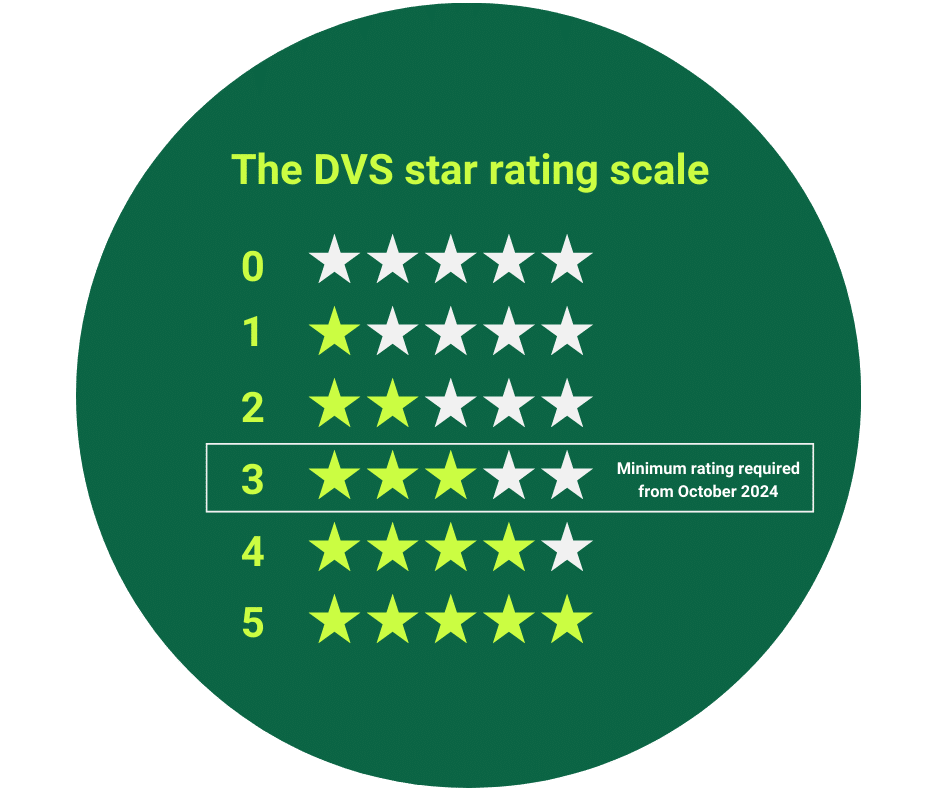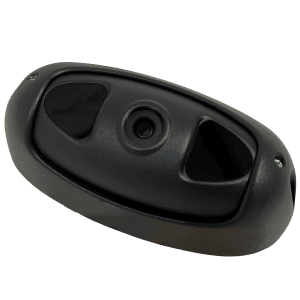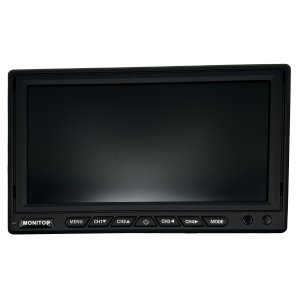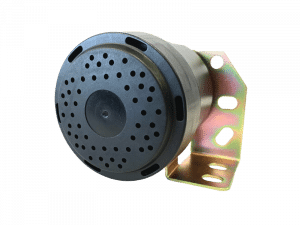
Following the introduction of the Direct Vision Standard (DVS), VUE was determined to ensure that all customers with our safety kits installed received continued support beyond the compliance deadline.
Read More
After the successful launch of the Direct Vision Standard in 2020, TfL are now aiming to improve safety even more by introducing the Progressive Safe System.
Direct Vision Standard (DVS) applies to HGVs over 12 tonnes entering or operating in London, who, from October 2024, do not meet the minimum 3-star rating.
To become DVS compliant, fleets not meeting this minimum 3-star rating will be required to install a Progressive Safe System kit.
Contact the team today to discuss DVS compliancyThis is at the forefront of the new Progressive Safe System specification with a particular focus on distinguishing between Vulnerable Road Users (VRUs) and static objects through the use of AI technology.
Currently to be DVS compliant, vehicles must have a minimum one-star rating or are required to fit a Safe System kit. From October 2024, this will change. Vehicles will be required to have a minimum 3-star rating or must fit the Progressive Safe System.
A Moving Off Information System (MOIS) which activates on proximity, identifies VRUs, and alerts the driver in-cab
A Blind Spot Information System (BSIS) to eliminate blind spots down the nearside of the vehicle, and provide alerts when a VRU is identified

To demonstrate compliance with the new PSS specifications, operators must provide visual evidence in the form of two photographs to show the hardware fitted, and a sensor functionality statement which states that all sensors which have been fitted are in accordance with the technical specifications specified and are in functional working order.
The purpose of the star-rating system is based around the driver's direct field of vision, and whether it is enough for the vehicle they are driving to be operated safely. Ultimately, it is a measure of how at risk VRUs are.
The Progressive Safe System prioritises the safety of VRUs, with the specification requiring fleets to fit technology with the ability to proactively identify cyclists, pedestrians and other vulnerable road users, but not static objects. This should hopefully provide drivers with more accurate warnings of risk, giving them the confidence to take action and prevent an incident.
You can find out what star-rating the vehicles in your fleet have here.VUE's DVS compliant kit revolves around AI camera technology, ensuring driver's are alerted in real-time when Vulnerable Road Users are in blind spots around the front and nearside of the vehicle.

To be compliant with the new MOIS and BSIS requirements, we recommend two AI cameras should be fitted to the front and the near side of the vehicle.

A monitor will be required in-cab to alert the driver when a VRU has been detected in the blind spot zones by the AI cameras. A speaker will also be fitted to audibly alert the driver.

As with the 2020 Safe System, the Progressive Safe System will require a left turn alarm to be fitted to the vehicle to warn VRU's of a vehicle's movements, with an after hours mute function.
Use the TfL's online tools to check your vehicle's permit status and star rating of your vehicles. If your rating is three to five stars, you don't need to fit anything to your vehicle, but can go directly to submitting your application for a permit on the TfL website.
If your vehicle is rated below three stars, you need to fit the Progressive Safe System to your vehicle to become DVS compliant. You must include visual evidence along with a sensor functionality statement along with your permit application.
Once your application is accepted, your permit will automatically be issued as a confirmation email. If your application is refused, you will receive feedback on the reasons why and must address these before re-applying.
As mentioned above, to demonstrate compliance with the new PSS specifications, operators must provide visual evidence and provide a sensor functionality statement along with their permit application.
As part of the visual evidence needed to show compliance with the PSS specifications, two photographs are required.
The first photograph must show the front and nearside of the HGV. The second photo must show the rear and the nearside of the HGV. In both photos, the vehicle registration plates must be visible, and must demonstrate that the hardware which has been fitted has been fitted as specified in the guidance provided by TfL and the technical specifications.
If the vehicle is a tractor unit, a photo including the trailer is not necessary. If a trailer is present, the rear photo must show the rear nearside of the trailer in-situ.
This statement must demonstrate specifically that the Blind Spot Information System (BSIS) and Moving Off Information Systems (MOIS) have been fitted in compliance with the guidance and technical specifications provided by TfL, and that they are fully functioning.
The statement should include a letter from either the fitter or original equipment manufacturer of the product being installed confirming that "the blind spot and moving off information systems fitted to this vehicle are fully functional, effective and installed in compliance with the PSS technical specifications."
Both the visual evidence and sensor functionality statement should be attached to your application.

Following the introduction of the Direct Vision Standard (DVS), VUE was determined to ensure that all customers with our safety kits installed received continued support beyond the compliance deadline.
Read More
If you're planning on applying for the DVS (Direct Vision Standard) grace period, this post will provide everything you need to apply.
Read More
Learn more about Greater Manchester's new Vision Zero road safety strategy and how it could impact your fleet.
Read More